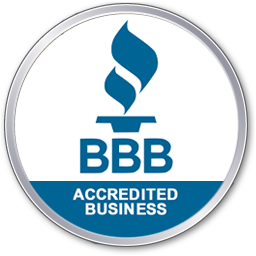Executive Summary
- Water damage can facilitate microbial contamination and mold growth, reducing indoor air quality (IAQ) and increasing the building’s inhabitants’ risk of experiencing negative health effects like respiratory issues.
- If water removal and water damage restoration are performed quickly, you can increase your chances of preserving your building’s IAQ.
- Searching for signs of water damage, like stains or musty odors, can help with early detection. Still, you should hire professionals for comprehensive IAQ assessments since they have technology like hygrometers to test humidity.
- Mold remediation, improving ventilation, and using dehumidifiers or air purifiers are excellent ways to remove contaminants, reduce moisture, and enhance IAQ.
Understanding the Connection Between Water Damage and Indoor Air Quality
Water damage can look harmless on the surface, usually manifesting as discoloration on walls or ceilings. However, it can directly affect indoor air quality (IAQ) by sparking microbial contamination and mold growth, which can irritate inhabitants’ allergies or lead to other adverse health effects, such as fever-like symptoms.
Understanding the link between water damage and IAQ is essential and can promote early detection. Promptly addressing the issue can help keep air quality healthy and foster a comfortable indoor environment. If your home has experienced a flood, leak, or pipe malfunction, consult a trusted environmental remediation company for water removal and water damage restoration to return your property to a satisfactory state with a healthy IAQ.
How Water Damage Affects Indoor Air Quality
Natural disasters and complications within a home can cause water damage, which is when water intrudes building materials throughout areas of the property, such as ceilings and walls, causing destructive processes like wood rot and mold growth. Some common causes of water damage are:
- Leaks in roofs from holes or lifted shingles.
- Broken siding or openings in walls.
- Burst pipes in bathrooms, kitchens, or laundry rooms.
- Malfunctioning appliances like broken washers, dishwashers, or refrigerators.
- Extended periods of high humidity.
- Extreme weather events like floods, hurricanes, tornadoes, or heavy rain.
If left unchecked, water damage can threaten the structural integrity of your house. The lingering moisture can facilitate the growth of xylophagous fungi, which causes wood decay and weakens load-bearing components of your home, increasing the risk of cave-ins or expensive repairs.
Excessive moisture from water damage can also encourage mildew and mold growth. Microscopic mold spores pollute the air, reducing IAQ and potentially triggering adverse health effects for exposed inhabitants.
Health Effects of Poor Indoor Air Quality Due to Water Damage
Water-damaged building materials can cause microbial contamination, fostering the growth of bacteria, molds, and toxins. These contaminants can float through the air and lower the IAQ.
Most health effects caused by water damage result from mold growth accompanying saturated building materials. Identifying mold growth can help you catch the problem and schedule mold removal before your IAQ drops drastically.
What Type of Mold Can Water Damage Create?
A 2011 study found direct associations between the development of several fungal species, including forms of mold, and water-damaged building materials. The most common mold types found after water damage are:
- Stachybotrys chartarum – This kind of mold, also referred to as “toxic mold” or “black mold,” is usually slimy to the touch and has a pitch-black appearance.
- Cladosporium – This mold usually starts as tiny black spots and grows until it eventually becomes enormous green blotches.
- Aspergillus – This type of mold frequently contains black or white, powder-like patches, but it also has easily identifiable yellow specks.
- Acremonium – This mold variation grows slowly and usually has a powdery white or gray color and an unpleasant odor.
- Chaetomium – This form of mold starts as fuzzy white or gray growths that eventually turn bluish-green as they mature.
Regardless of what type of mold you notice growing in your water-damaged property, you should contact an experienced environmental remediation company that offers mold services to help retain a healthy IAQ and reduce your risk of experiencing adverse health effects.
What Symptoms Does Mold Exposure Cause?
Breathing in mold spores can cause fever-like symptoms or respiratory issues like uncomfortable allergic reactions. The severity of the effects that someone feels will depend on what type of mold is growing and the inhabitant’s sensitivity to the spores. Some symptoms you may experience after breathing in mold spores are:
- Coughing
- Sneezing
- Shortness of breath
- Headaches
- Fatigue
- Nausea
- Dizziness
In addition to increasing the inhabitants’ risk of health issues, mold can degrade the structure of your home by feeding on materials like damp wood. You should schedule water damage restoration as soon as possible to mitigate mold growth and preserve your and your building’s health.
Keep Your Property Free from Mold
Mold poses risks to your health and property. Alpha Environmental provides expert remediation and removal to protect you and your home.
Assessing Indoor Air Quality in Water-Damaged Environments
Hiring a professional water damage and IAQ remediation team is the best way to evaluate your property accurately and fix any lingering environmental problems. Still, you can gauge the severity of your situation before the remediation team gets there by looking for evidence of water damage and poor IAQ.
Gauging Water Damage
Considering water damage and poor IAQ go hand in hand, you should first survey your property for signs of water damage. Some potential indications of water damage are:
- Discoloration or stains, especially on walls or ceilings
- Musty odors
- Peeling paint
- Bubbling wallpaper
- Warped floors
- Water-saturated insulation
- Visible mold growth
- Unusually high water bills
Evaluating Poor IAQ
If you find evidence that suggests your home has water damage, you should also look for signs of poor air quality. Some potential signals that your home has an unhealthy IAQ are:
- Dust buildup
- Temperature hot spots
- Unusual, stale odors
Poor IAQ can also cause physical symptoms in inhabitants, such as dryness and irritation in the skin or eyes or difficulty breathing. If you notice any of the indicators above, contact an environmental remediation team.
IAQ specialists are equipped with helpful technology like hygrometers, which can measure the humidity throughout your house and help evaluate how likely mold will grow there and jeopardize your IAQ. The specialist you hire should also have access to air quality monitors that gauge levels of volatile organic compounds (VOCs) and other pollutants to give you transparency into your building’s air quality.
How You Can Improve Air Quality
Thankfully, with the help of an experienced environmental remediation team, you can improve your IAQ. After finishing the water damage restoration process and helping you eliminate the source of the issue, the specialists will likely perform mold remediation if necessary.
Mold Remediation Techniques
Most mold remediations will require a unique approach, but the process typically involves the following steps.
Isolate the Contaminated Area
If unrestrained, mold can quickly proliferate and spread to other parts of your house. So, your environmental remediation team should carefully cover air vents and close doors and windows that connect to other areas of your building. Depending on the severity of the problem, they may also use plastic sheeting to block smaller openings as an extra containment strategy.
You should avoid any activity in the affected area until the mold remediation process is finished—mold spores can spread by attaching themselves to shoes, clothing, and pets.
Subdue Dust
Dust may attract mold spores, which makes them more likely to become airborne and spread throughout your house. So, your remediation team may spray contaminated surfaces or employ specialized vacuums or air filtering systems to remove dust particles.
Remove Contaminated Materials
If the mold has developed on porous materials like carpet, insulation, or drywall, they may need to be removed entirely to solve the issue. Materials that are moist or have mold damage will be disposed of by sealing them in plastic bags.
Clean the Area
The remediation team will likely use specialized chemicals to remove the mold from wood surfaces and non-porous materials, hoping to eliminate any hidden spore colonies and prevent their recurrence. After removing the mold, the surfaces should be washed with fresh water. Before carefully taking down containment barriers, surrounding surfaces and any holes in the rooms should also be cleaned.
Once the mold has been addressed, you can outfit your home with different appliances and systems to raise the IAQ and reduce the risk of mold returning to your property.
Equipping Your Home
Adapting your home and adding certain appliances can improve IAQ and reduce humidity. The following additions can help improve IAQ.
Dehumidifiers
A dehumidifier lowers the humidity indoors by drawing out liquid water from the air, which inhibits mold growth.
Air Purifiers
You can implement freestanding air purifiers throughout your home that suck in air through filters, ideally HEPA filters, and dispense less polluted air, gradually improving your IAQ.
Adequate Ventilation
Since moisture and mold may accumulate quickly in enclosed spaces, one of the best ways to increase IAQ is to remove humid air and replace it with fresh air throughout your house using exhaust fans or purpose-built openings like windows.
Getting professional input from a trusted environmental remediation team is essential. They have the experience and educational backing to help you make changes to your home that keep your IAQ healthy.
How Alpha Environmental Can Help
After a natural disaster or an issue with your home’s piping or appliances, you may experience water damage. If water removal and water damage restoration are not performed quickly, fungi like mold can grow atop the water-saturated building materials. When mold spores infiltrate the building’s air supply, it can lower the indoor air quality and pose adverse health effects to susceptible inhabitants.
Alpha Environmental‘s skilled team of environmental professionals has over 21 years of experience performing IAQ screenings, water damage restoration, and mold remediation services within the greater Portland, Oregon, area. We can help raise your IAQ, mitigating adverse health effects like respiratory issues and facilitating comfortable breathing throughout your property.
Contact Alpha Environmental today for an expert-level IAQ assessment and water damage restoration services.




